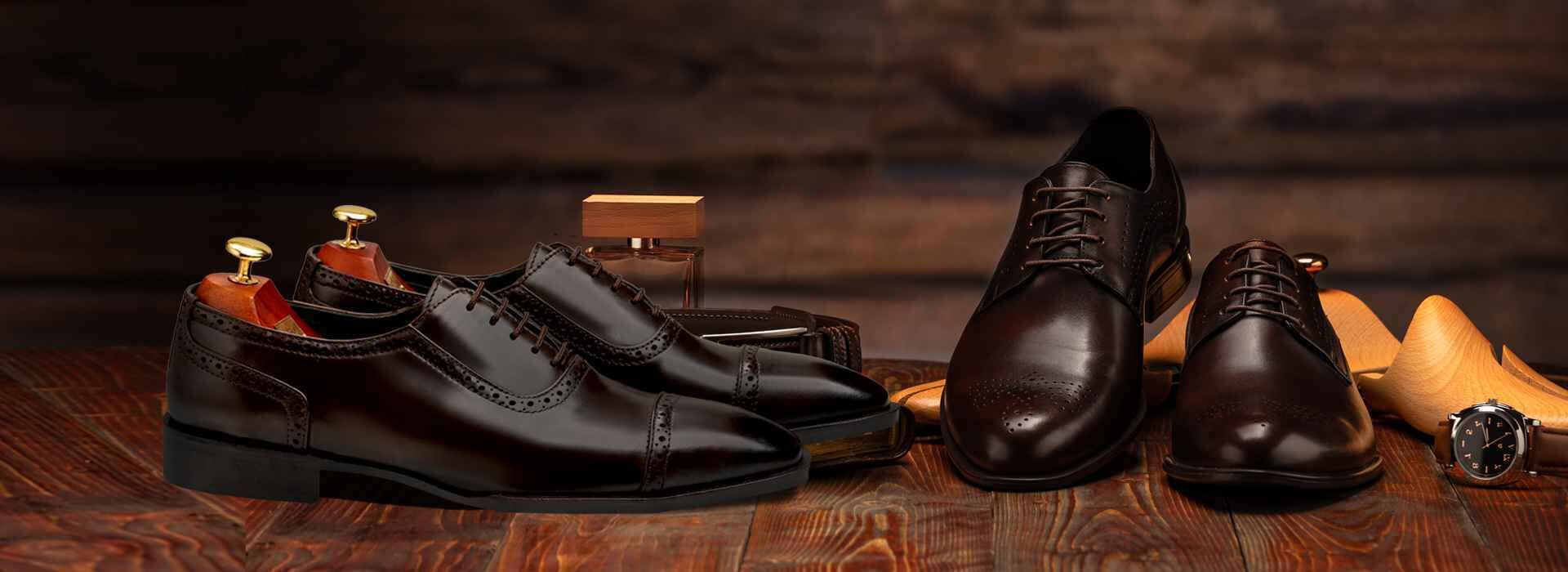Leather shoes vs Synthetic leather shoes?

Introduction
Shoes are a person's comfort level, sense of style, and morals, in addition to being a fashion statement. The shoe's material greatly influences these characteristics. The rivalry between leather and synthetic leather shoes in today's market raises concerns about sustainability, ethics, and quality. Let's examine these two popular choices in more detail and discuss the advantages and disadvantages of each.
Understanding Leather Shoes
Quality and Characteristics of Genuine Leather Shoes
Genuine leather boasts unparalleled quality and is known for its durability, flexibility, and natural texture. The various types, such as full-grain and top-grain leather, offer distinct characteristics that cater to diverse preferences. Genuine leather shoes are made of wild animal skin that has been treated to be durable and, most of the time, waterproof. The most common type of leather used in shoes is cowhide.
Exploring Synthetic Leather Shoes
Artificial leather, also known as faux leather, is a synthetic alternative that mimics the look and feel of genuine leather using various materials, such as polyurethane (PU) and polyvinyl chloride (PVC). It looks like genuine leather but is not genuine leather and has a very short lifespan.
Comparative Analysis: Leather vs Synthetic Leather Shoes
In the realm of durability, leather shoes often outlast their synthetic counterparts. Yet, artificial leather shoes tend to be more water-resistant and easier to clean. Regarding comfort, leather provides breathability and molds to the foot over time, while synthetic shoes might lack this adaptability.
Fashion and Style
Fashion trends often switch between the two materials. At the same time, leather conveys a classic and luxurious feeling. The luxury that genuine leather shoes give you is unmatched, and the leather shoes have a distinct sound while walking, which is much appreciated. Synthetic options offer design versatility, catering to a variety of styles.
Price and Affordability
Considering the quality and craftsmanship, leather shoes generally come with a higher price tag. However, synthetic leather shoes offer a more budget-friendly alternative without compromising style.
Maintenance and Care
Both types require care, but the approach is different. Leather requires conditioning and moisture protection, while synthetic shoes are often easier to clean and maintain. But this does not mean that it is challenging to take care of leather shoes. Pay attention to the fact that you can do this very easily. You can read this blog on How to clean leather shoes. Everything is explained in great detail in it.
Ethical Considerations
Using animal-derived materials in leather sparks ethical debates, whereas synthetic leather aligns with a cruelty-free approach. Understanding the consumer's moral stance becomes pivotal in this comparison.
Health Factors
Breathability is an important factor in footwear when it comes to foot health, and this is where leather is preferred. Because leather is naturally breathable, air can circulate around the foot to help control moisture and temperature.Synthetic materials have the potential to be hypoallergenic but may also be less breathable.
Market Trends and Popularity
Consumer preferences and market trends shift, influenced by fashion statements, sustainability, and pricing. This dynamic affects the demand for both types of shoes.
Conclusion
Choosing between leather and synthetic leather shoes involves many factors, from quality and comfort to ethics and environmental impact. Understanding individual needs and values is vital to making an informed decision.
